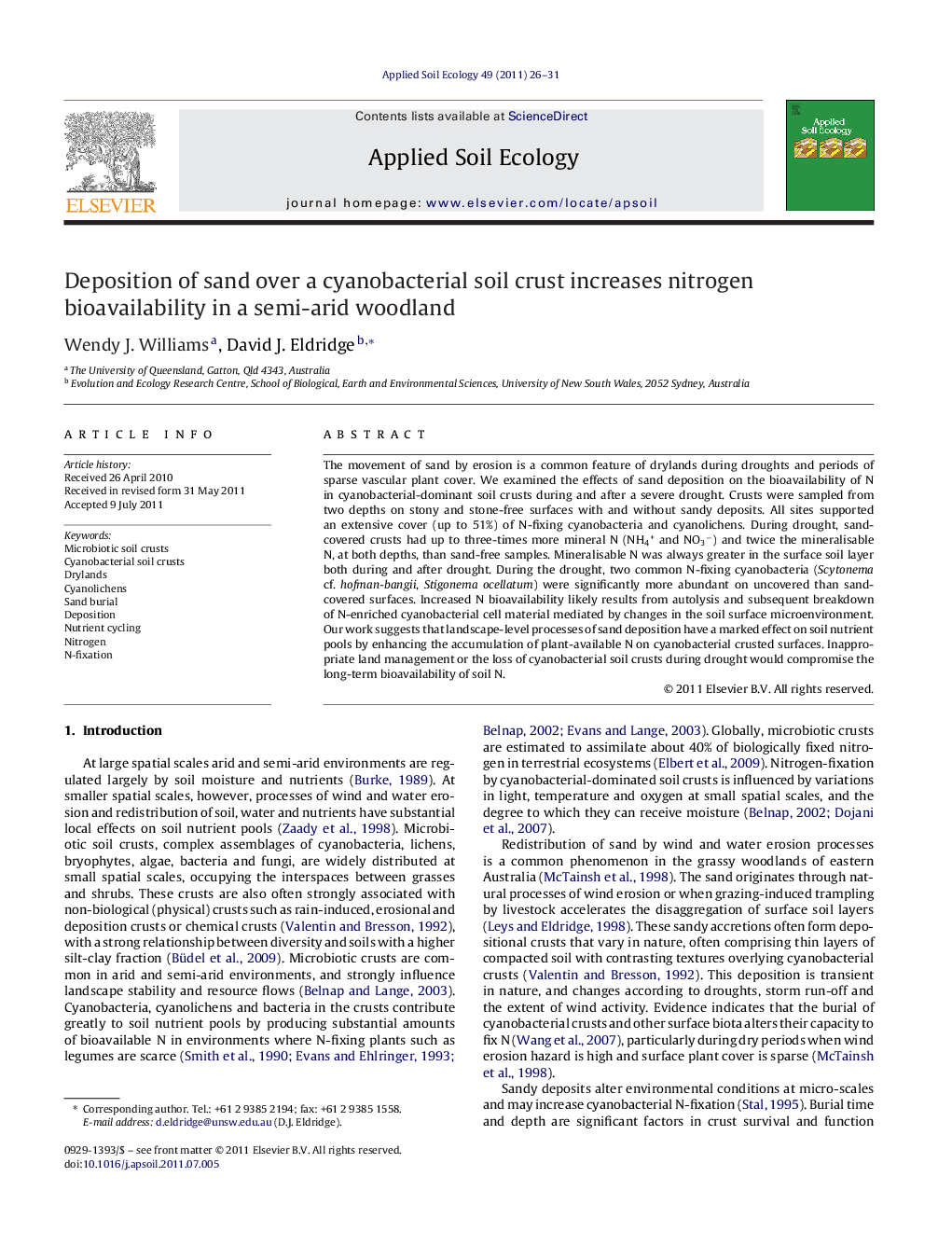| Article ID | Journal | Published Year | Pages | File Type |
|---|---|---|---|---|
| 4382693 | Applied Soil Ecology | 2011 | 6 Pages |
The movement of sand by erosion is a common feature of drylands during droughts and periods of sparse vascular plant cover. We examined the effects of sand deposition on the bioavailability of N in cyanobacterial-dominant soil crusts during and after a severe drought. Crusts were sampled from two depths on stony and stone-free surfaces with and without sandy deposits. All sites supported an extensive cover (up to 51%) of N-fixing cyanobacteria and cyanolichens. During drought, sand-covered crusts had up to three-times more mineral N (NH4+ and NO3−) and twice the mineralisable N, at both depths, than sand-free samples. Mineralisable N was always greater in the surface soil layer both during and after drought. During the drought, two common N-fixing cyanobacteria (Scytonema cf. hofman-bangii, Stigonema ocellatum) were significantly more abundant on uncovered than sand-covered surfaces. Increased N bioavailability likely results from autolysis and subsequent breakdown of N-enriched cyanobacterial cell material mediated by changes in the soil surface microenvironment. Our work suggests that landscape-level processes of sand deposition have a marked effect on soil nutrient pools by enhancing the accumulation of plant-available N on cyanobacterial crusted surfaces. Inappropriate land management or the loss of cyanobacterial soil crusts during drought would compromise the long-term bioavailability of soil N.
► We examined N production from biological soil crusts covered by sand. ► Crusts are covered by sand during wind storms and droughts. ► Sand-covered crusts had more nitrogen than uncovered crusts. ► Increased nitrogen most likely resulted from death and breakdown of crust material. ► Prolonged sand cover may compromise the long-term bioavailability of soil N.
